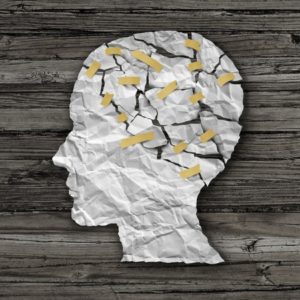Psychoanalysis Without Freud

An article in STAT News on Freud and psychoanalysis, “Saving Sigmund,” caught my attention. It described how psychoanalysis is trying to “reinvigorate” itself. In the process, psychoanalysts are trying not to be “unduly fixated” on Freud’s stages of psychosexual development or his tripartite psyche of the id, ego and superego. One psychoanalyst said assuming she was Freudian was “like asking a modern-day nuclear physicist whether he’s Copernican.” While much of what Copernicus said was not true, it was a helpful foundation.
The analogy is a bit over the top and seems to be an attempt to distance current psychoanalysis from the rejection of many of Freud’s ideas. Writing for STAT, Carter Maness pointed to what may be the foundation of the need to reconceptualize psychoanalysis: only 15% of the members of the American Psychoanalytic Association (APA) are under 50. Traditional Freudian analysis is a dying art. “Lying on a couch, talking about your childhood, day after day for years — is widely seen as a musty relic, far too expensive and intensive to fit into modern life.”
The 1945 film Spellbound, directed by Alfred Hitchcock, captured Freudian psychoanalysis at the zenith of its popularity. The movie’s producer, David O. Selznick wanted Hitchcock to make a movie reflecting his own positive experience with psychoanalysis. Selznick even brought in his own analyst as a technical advisor for the film. The advisor clashed frequently with Hitchcock. Of course in a pro-Freudian movie like Spellbound, there was a dream sequence, which was designed by the artist Salvador Dali. In it, the Freud look-a-like character encouraged Gregory Peck to continue recalling the details of his dream—“the more cock-eyed, the better for the scientific side of it.”
Freud saw himself as a pioneering scientist and repeatedly asserted psychoanalysis was a new science. In his work, An Outline of Psycho-Analysis, Freud said conceiving mental life as a function of the psychical apparatus of id, ego and super-ego was “a scientific novelty.”
We assume that mental life is the function of an apparatus to which we ascribe the characteristics of being extended in space and being made up of several portions—which we imagine, that is, as resembling a telescope. . . . we have arrived at our knowledge of this apparatus by studying the individual development of human beings.
However, Freud’s claim that psychoanalysis was a science of the mind is the subject of continuing debate. As was pointed out in the article on Sigmund Freud in the Internet Encyclopedia of Philosophy, the scientific status of psychoanalysis is undermined since it cannot be falsified. Karl Popper’s criterion of demarcation between the scientific and the unscientific is that for something to be scientific it must be testable and therefore falsifiable.
It is argued that nothing of the kind is possible with respect to Freud’s theory–it is not falsifiable. If the question is asked: “What does this theory imply which, if false, would show the whole theory to be false?,” the answer is “Nothing” because the theory is compatible with every possible state of affairs. Hence it is concluded that the theory is not scientific, and while this does not, as some critics claim, rob it of all value, it certainly diminishes its intellectual status as projected by its strongest advocates, including Freud himself.
Psychoanalytic thought finally lost its stranglehold on psychiatry in the 1980s with the reformulation of the Diagnostic and Statistical Manual (DSM). That was also the beginning of the rise of biological psychiatry. The heroic figures of psychoanalytic therapists in movies like Spellbound, The Snake Pit (1948), and The Three Faces of Eve (1957) changed. Psychiatric treatment began to be seen through the lens of movies like One Flew Over the Cuckoo’s Nest (1975) and Frances (1982).
Modern popular thinking on Freudian thought is satirically captured in the 1991 comedy, What About Bob? Bill Murray plays Bob Wiley, the unstable patient of an egotistical psychiatrist, Leo Marvin, played by Richard Dreyfuss. Unable to cope on his own, Bob Wiley follows and befriends Dr. Marvin’s family when the family leaves for a month-long vacation. Ultimately this pushes the good doctor over the edge and there is a role-reversal of sorts. Look for the appearance of a bust of Sigmund Freud in several scenes throughout the movie. By the way, Dr. Marvin’s son is named Sigmund. Here is a clip of the therapy session at the beginning of the film.
In order to reinvigorate their profession, psychoanalysts are repackaging the concepts underlying analysis and introducing them to school kids. A past president of the APA said: “We’ve started applying psychoanalytic ideas outside of our offices—in schools, in agencies, in business . . . . We’ve made social issues much more on the minds of our membership.” Project Realize, an alternative school for at-risk teenagers in Cicero Illinois, has treated more than 400 students expelled from regular school for aggressive and dysfunctional behavior. Now in its 12th year, it is said to have lowered rates of violence and improved graduation.
Training requirements have been altered somewhat. In the past, would-be analysts had to first earn an MD, a PhD, or an LCSW (a license to practice social work). Then they had to complete four years of coursework in psychoanalysis AND 200 hours of clinical training. In addition, they had to undergo analysis (four sessions per week) for at least two years.
One psychoanalyst in private practice remarked those requirements fit the 1950s, when every psychologist wanted to be an analyst. “If you’re doing a MD or a PhD or an LCSW, the conditions of starting a private practice and having a job don’t fit with analytic training anymore. Candidates find their analytic voice at 50. That’s nuts.” When Mark Smaller became the president-elect of the APA at 62, he said he could have been considered “a Young Turk.”
Freud has been dethroned as the king of psychotherapy and classic psychoanalysis is increasingly seen as a dying art. Now there is a two-year training for “psychoanalytic psychotherapy” offered by some training centers. It incorporates Freudian ideas about motivation and the unconscious and offers an easier and cheaper way to train as an analyst. And recent studies of Freud have suggested new, and intriguing perspectives into the man and the development of his theories.
In The Freudian Fallacy, E.M. Thornton said Freud’s personal use of cocaine was not just limited to his late twenties and early thirties, between 1884 and 1887. She presented evidence that Freud resumed using cocaine in the latter half of 1892, “the year coinciding with the emergence of his revolutionary new theories, and asserts that these theories were the direct outcome of this usage [of cocaine].”
The false prophet of the drug world can propagate his message with as much conviction and authority as the true and his manner will have the same burning fervor and sincerity. In common with other victims of brain pathology, Freud would still have been able to reason skillfully from his false premises and so hide his psychotic traits from his followers. And yet, over the years, one by one, most of Freud’s inner circle of early disciples left him.
Paul Vitz developed a fascinating thesis that Freud had a strong, life-long positive identification and attraction to Christianity in Sigmund Freud’s Christian Unconscious. Vitz said there was also a concurrent secondary influence of unconscious hostility to Christianity seen in his preoccupation with the Devil, Hell, and the Anti-Christ.
All of this very substantial Christian (and anti-Christian) part of Freud should provide an understanding of his ambivalence about religion. It should also furnish a new framework for understanding major aspects of Freud’s personality, and allow us … to re-evaluate Freud’s psychology of religion.
As a young child, Sigmund had a Catholic nanny from around the age of one until he was two years and eight months old, maybe longer. It is likely that given that his mother had two pregnancies and births, and took care of a sick child who died during this time, that the nanny was also his wet nurse. Freud himself admitted that his nanny told him a great deal about God and hell. In a letter to his friend Wilhelm Fiess, he said:
I asked my mother whether she remembered my nurse. “Of course,” she said, “an elderly woman [Freud’s mother was 21 at the time of his birth], very shrewd indeed. She was always taking you to church. When you came home you used to preach, and tell us all about how God conducted His affairs.
In “Reassessing Freud’s Case Histories,” science historian Frank Sulloway said the intellectual quicksand upon which Freud built his theories and assembled his “empirical” observations was extensive. “His controversial clinical methods only served to magnify the conceptual problems already inherent in his dubious theoretical assumptions.” The training methods he supported were “highly influential” in removing psychoanalysis from academic science and medicine. “As a result, the discipline of psychoanalysis, which has always tapped considerable religious fervor among its adherents, has increasingly come to resemble a religion in its social organization.”
In “Why Freud Still Isn’t Dead,” John Horgan pointed out how there has been a recent trend in trying to find common ground between neuroscience and psychoanalysis. From one perspective, this fits as Freud originally trained as a neurologist and tried to base his theory of the psyche on an evolutionary sense of brain development. Here he followed the thought of Ernst Haeckel, who theorized the soul/psyche evolved biologically. In his classic 1892 work, Monism as Connecting Religion and Science, Haeckel said:
What we briefly designate as the “human soul,” is only the sum of our feeling, willing, and thinking—the sum of those physiological functions whose elementary organs are constituted by the microscopic ganglion-cells of our brain. Comparative anatomy and ontogeny show us how the wonderful structure of this last, the organ of our human soul, has in the course of millions of years been gradually built up from the brains of higher and lower vertebrates.
Horgan observed that science has failed to produce “a theory/therapy potent enough to render psychoanalysis obsolete once and for all.” Neither Freudians nor proponents of “more modern treatments” can point to any unambiguous evidence that psychoanalysis works or doesn’t work. “Until science yields an indisputably superior theory/therapy for the mind, psychoanalysis–and Freud–will endure.” Here’s the rub. When psychoanalysis asks “fundamental questions” like, “Why do people do the things they do,” it goes beyond the limits of what can legitimately be investigated by science. So science will never be able to develop unambiguous evidence for ANY theory/therapy for the mind.
Psychoanalysis may not be dead as a therapy, but it is not the science Freud thought it was. In a world dominated by the DSM, neurotransmitter dysregulation, and the search for the biomarkers of mental disorders, there is increasingly less room for Freudian constructs like psychosexual development and the id, ego and super ego. We might even say that Freudian thought is in danger of being overcome by its own death instinct.



